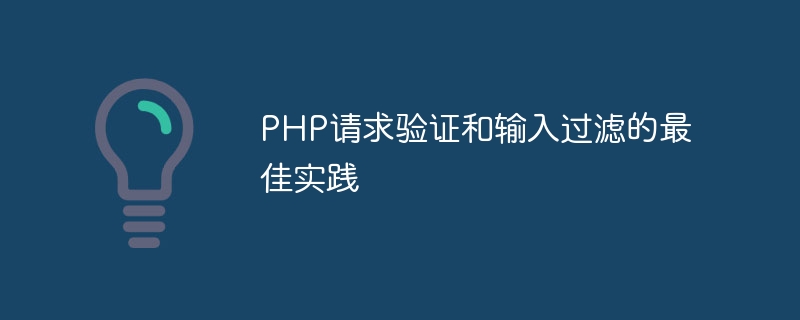

Best Practices for PHP Request Validation and Input Filtering
Introduction:
When developing any web application, ensuring the security of data is crucial of. As a widely used server-side scripting language, PHP provides many powerful tools to validate and filter user input. This article will introduce some best practices to help you implement request validation and input filtering security in PHP.
$email = filter_input(INPUT_POST, 'email', FILTER_SANITIZE_EMAIL);
if (filter_var($email, FILTER_VALIDATE_EMAIL)) {
// 邮件地址有效,继续处理
} else {
// 邮件地址无效,显示错误消息给用户
}In the above example, the filter_input() function is used to get the submitted POST request Input data named 'email'. The FILTER_SANITIZE_EMAIL filter function is used to remove illegal characters in email addresses. The filter_var() function is used to verify whether the filtered email address is valid.
$phone = $_POST['phone'];
$pattern = "/^(+d{1,3}-)?d{10}$/";
if (preg_match($pattern, $phone)) {
// 电话号码有效,继续处理
} else {
// 电话号码无效,显示错误消息给用户
}In the above example, the regular expression pattern is used to verify that the phone number entered by the user conforms to the specified format. If the match is successful, the phone number is valid.
$comment = $_POST['comment']; $encoded_comment = htmlspecialchars($comment); // 将编码后的评论存储在数据库中
In the above example, the htmlspecialchars() function will escape HTML tags and special characters to Ensure user input is not interpreted as HTML code.
$stmt = $pdo->prepare("SELECT * FROM users WHERE username = :username");
$stmt->bindParam(":username", $username);
$username = $_POST['username'];
$stmt->execute();In the above example, the input is ensured by binding the user-entered variables with predefined parameters. Be properly escaped and filtered, thus preventing SQL injection attacks.
Conclusion:
By following the above best practices, you can implement request validation and input filtering security in PHP. Using filter functions, regular expression validation, and preventing XSS and SQL injection attacks are important steps to ensure the security of user input data. Remember that user input validation and filtering are critical components of web application security, and it is crucial to remain vigilant at all times.
The above is the detailed content of Best practices for PHP request validation and input filtering. For more information, please follow other related articles on the PHP Chinese website!




